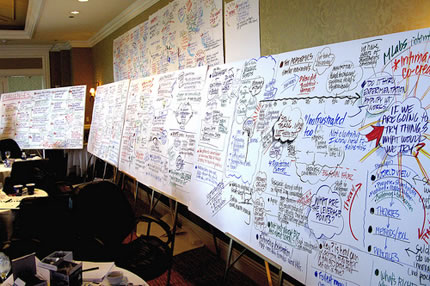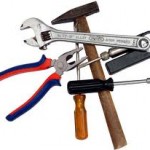Service Standards Make Job Easier
Companies that have service standards are not strict and rigid. Companies that have service standards are not stifling creativity in their service delivery. Companies that have service standards are not restricting innovation in the customer experience. Service Standards are empowering and are tools to make the job of the employee and the manager so much easier. Why? Because they make it very clear as to the behaviors that are accepted and not accepted in how one treats a customer, both internal and external.
Employees want to know what is expected of them. In fact, NOT knowing what is expected, is in the top six reasons as to why employees leave a company, according to Gallup. Employee want to be held accountable and for their colleagues to be held accountable to the same standards. When service standards have not been defined, this is impossible to do. Without service standards, employees make up their own or adhere to the standards they learned from a previous place of employment.
Service Standards create a consistency across an organization because they should be the same for all departments, 365 days a year and 24/7. Service standards are essential for a seamless customer experience. They should not change with the time of year, day of month, or the economy ups and downs. It becomes confusing to employees when they do.
You don’t need to have a lot of service standards. The key is to choose three, four, or five, that will have a significant impact on defining the experience customers will have with your organization. For example, Ritz Carlton has three service standards, Walt Disney World has four service standards.
For managers, the job of managing becomes easier too. The service standards are freeing in that they let the manager manage the behaviors and not get sucked into becoming the “tough old manager” just because she is the one who is willing to call an employee out when they are exhibiting bad customer service behaviors. With clear service standards, managers are simply making sure that employees are adhering to the standards that were agreed upon in their hiring and are a part of the culture of the organization.
Chapter 4 of Unleashing Excellence has many examples of service standards that various organizations have chosen as the “rules of engagement” for providing customer service. These standards when prioritized, provide a template to employees in those moments of truth, to know how to make the best service decision. Service standards are core tools for delivering consistent excellent service.
Innovation Stimulation
 Today’s Wall Street Journal has an interesting article, “Entrepreneurs Seek to Elicit Workers’ Ideas.” The premise of the article is that a company’s employees are often a vast and untapped reservoir of ideas for improving the business. One company CEO is quoted as saying, “Wow, we have a lot of smart people back here, and we’re not tapping their knowledge.”
Today’s Wall Street Journal has an interesting article, “Entrepreneurs Seek to Elicit Workers’ Ideas.” The premise of the article is that a company’s employees are often a vast and untapped reservoir of ideas for improving the business. One company CEO is quoted as saying, “Wow, we have a lot of smart people back here, and we’re not tapping their knowledge.”
We heartily agree.
A company’s employees deal with the same challenges, issues, and complaints day in and day out and typically know exactly what ticks off customers. The problem is that many organizations simply don’t ask their employees to help identify and solve the issues. Or they do ask (because the employee survey said that management never asks for input) but never take action on the suggestions. Which is too bad, since our experience shows that employee solutions are usually MUCH less expensive than management’s solutions.
The one quibble we have with the WSJ article is the bias for offering cash incentives for submitting ideas – $50 per implemented idea; $100 for 100 innovative ideas, etc. We like money as much as anyone, but we believe that improving the organization should be part of the organization’s culture and participating in the forward movement of the company should simply be part of the job description.
We’ve seen many organizations implement a “bounty” for ideas only to find that employees begin hording ideas out of fear that someone will steal them for the bounty, or become enraged that “Joan got $50 for her stupid idea, and I got nothin’ for my great idea.” And how about the employee who gets $50 for an idea that saves the company $10 million? Trust us; someone is going to feel shortchanged.
Check out the WSJ article, but also know that we feel collaboration is the name of the innovation game. The Service Obstacle System described in Unleashing Excellence provides several tools for getting your employees involved in identifying and eliminating (or alleviating) barriers to excellence. The Continuous Service Improvement Meeting Agenda is a good place to start.
Do your employees view innovation as a part of their jobs?

